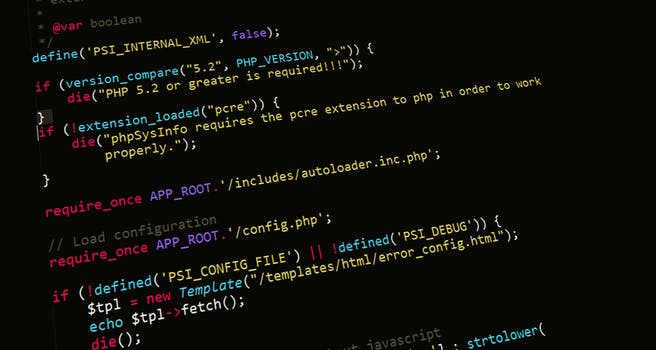TheDeveloperBlog.com
C-Sharp | Java | Python | Swift | GO | WPF | Ruby | Scala | F# | JavaScript | SQL | PHP | Angular | HTML
Python Tuple Examples
These Python 3 examples use tuples, which cannot be changed but contain separate values. They pack, unpack and benchmark tuples.Tuple. A tuple stores values.
It is similar to a list but uses different syntax. With tuples we cannot change elements. This makes programs more predictable.
Values. Tuples can be used as values: unlike classes, they never change. Often we need to hold values together. Suppose an element has a shape and a color. This forms a tuple pair.
Create. We first revisit the concept of immutability. A tuple cannot be changed after created. So the creation syntax is important. We use parentheses "(" and ")" to create tuples.
Zero elements: To create a tuple with zero elements, use only the two parentheses "()".
One element: For a tuple with one element, use a trailing comma. This helps Python tell that you don't mean an expression, such as (1 + 2).
Two elements: For a tuple with two or more elements, use a comma between elements. No ending comma is needed.
Based on:
Python 3
Python program that creates tuples
# Zero-element tuple.
a = ()
# One-element tuple.
b = ("one",)
# Two-element tuple.
c = ("one", "two")
print(a)
print(len(a))
print(b)
print(len(b))
print(c)
print(len(c))
Output
()
0
('one',)
1
('one', 'two')
2

Immutable. An immutable object cannot be changed. Once created it always has the same values. A tuple is immutable. Here we attempt to assign the first element in the tuple.
But: This is invalid. When executed, the Python runtime will report a TypeError.
Create: To make a new, changed tuple, we would need to create a new tuple. We could specify that some items have the same values.
Python program that assigns tuple
tuple = ('cat', 'dog', 'mouse')
# This causes an error.
tuple[0] = 'feline'
Results
TypeError: 'tuple' object does not support item assignment

Immutability. This part is kind of boring. But the concept of immutable objects is important. It seems inefficient. Why not just modify existing objects?
Dictionary: Some objects are more efficient when they are immutable. For example, in a dictionary tuples are used.
And: We can directly access these two-element tuples. If these tuples could be changed, the original dictionary would become invalid.
Pack, unpack. Tuples can be packed and unpacked. In packing, we place values into a new tuple. And in unpacking we extract those values back into variables.
Note: This syntax form creates elegant and small programs. In this program we pack two strings into a tuple.
Then: We initialize two variables to those two packed values. The variables act then like any other variable.
Python program that assigns variables
# Create packed tuple.
pair = ("dog", "cat")
# Unpack tuple.
(key, value) = pair
# Display unpacked variables.
print(key)
print(value)
Output
dog
cat

No parentheses. Tuples are typically specified with surrounding parentheses chars. But suppose you are a wild one. You can just use a comma. The tuple is inferred.
Python program that uses tuples, no parentheses
# A trailing comma indicates a tuple.
one_item = "cat",
# A tuple can be specified with no parentheses.
two_items = "cat", "dog"
print(one_item)
print(two_items)
Output
('cat',)
('cat', 'dog')

Add, multiply. A tuple is not a number. But it can be added to or multiplied. By adding two tuples, they are concatenated. One is put after the other.
And: By multiplying a tuple with a number, we add the tuple to itself a certain number of times.
Warning: This syntax form can become somewhat confusing. I have not used it often on tuples.
Python program that adds and multiples tuples checks = (10, 20, 30) # Add two tuples. more = checks + checks print(more) # Multiply tuple. total = checks * 3 print(total) Output (10, 20, 30, 10, 20, 30) (10, 20, 30, 10, 20, 30, 10, 20, 30)

Divide, subtract. We cannot divide or subtract tuples. Out of curiosity I tried this. I received the TypeError with "unsupported operand type."
Operand: As a reminder, an operand is a value on one side of an expression. It is part of an operation.
Max, min. The max and min methods can be used on tuples. These methods locate the item that would be sorted last (max) or sorted first (min).
For strings: The comparison performed is alphabetical—"able" comes before "zero". So "able" would be less than "zero".
For numbers: The comparison is numeric—10 comes before 20. These comparisons are logical.
Python program that uses max and min
# Max and min for strings.
friends = ("sandy", "michael", "aaron", "stacy")
print(max(friends))
print(min(friends))
# Max and min for numbers.
earnings = (1000, 2000, 500, 4000)
print(max(earnings))
print(min(earnings))
Output
stacy
aaron
4000
500
In keyword. This example creates a two-element tuple (a pair). It searches the tuple for the string "cat". It then searches for "bird", but this string does not exist.
Note: With the in-keyword, we can search a tuple. We use in as part of an if-statement. And we can combine in with not—this is "not in".
Python that searches tuples
pair = ("dog", "cat")
# Search for a value.
if "cat" in pair:
print("Cat found")
# Search for a value not present.
if "bird" not in pair:
print("Bird not found")
Output
Cat found
Bird not found
Slice. A tuple can be sliced. The slice notation uses a colon. On the left side of the colon, we have the starting index. If no starting index is present, the program uses 0.
And: On the right side of the colon, we have the ending index. If no ending index is present, the last index possible is used.
Note: Slicing creates a new tuple. A slice that specifies no indexes is a simple way to copy a tuple.
Python that uses tuple slices values = (1, 3, 5, 7, 9, 11, 13) # Copy the tuple. print(values[:]) # Copy all values at index 1 or more. print(values[1:]) # Copy one value, starting at first. print(values[:1]) # Copy values from index 2 to 4. print(values[2:4]) Output (1, 3, 5, 7, 9, 11, 13) (3, 5, 7, 9, 11, 13) (1,) (5, 7)
Index. This gets the index of an element. Here we search for the value "dog," and get the index 1 (the second position). If we use index() on a value that is not found, an error results.
Tip: Consider the in operator before calling index() on a value that might not exist. This prevents a possible exception.
Python that uses index
# Three-item tuple.
items = ("cat", "dog", "bird")
# Get index of element with value "dog".
index = items.index("dog")
print(index, items[index])
Output
1 dog
Count. This returns the number of elements with a specific value in a tuple. If you need to get the total length of the tuple, please use len. Count only counts certain values.
Python that uses count values = (1, 2, 2, 3, 3, 3) print(values.count(1)) print(values.count(3)) # There are no 100 values, so this returns 0. print(values.count(100)) Output 1 3 0
Keys, dictionary. We next use a tuple as a dictionary key. Dictionaries can use tuple keys without worrying about them changing. Here we use the pair of values 1 and 2 to look up a value.
Tip: You can use tuples in this way to create a two-dimensional dictionary. Use a tuple to represent X and Y coordinates.
Python that uses tuples as dictionary keys
# A tuple with two numbers.
pair = (1, 2)
# Create a dictionary.
# ... Use the tuple as a key.
dict = {}
dict[pair] = "Python"
# Access the dictionary using a tuple.
print(dict[(1, 2)])
Output
Python
Convert. A tuple cannot be modified. But a list can be changed in many ways. For this reason we often need to convert a tuple into a list.
List: The list built-in accepts a tuple as its argument. Here we use sort() on the resulting list.
Finally: In the program, we convert the list back into a tuple. This is done with the tuple() method.
Here: We see that a list has square brackets. A tuple has round ones. This is an important part of Python's syntax.
Python that converts tuple and list # Tuple containing unsorted odd numbers. odds = (9, 5, 11) # Convert to list and sort. list = list(odds) list.sort() print(list) # Convert back to tuple. sorted_odds = tuple(list) print(sorted_odds) Output [5, 9, 11] (5, 9, 11)
Enumerate. This is a built-in method. Enumerate() returns a tuple of an index and the element value at that index. It is often used on a list.
Here: We use enumerate on a list of strings. We can access the tuple, or directly unpack the tuple in the for-statement.
Python that uses enumerate
values = ["meow", "bark", "chirp"]
# Use enumerate on list.
for pair in enumerate(values):
# The pair is a 2-tuple.
print(pair)
# Unpack enumerate's results in for-loop.
for index, value in enumerate(values):
# We have already unpacked the tuple.
print(str(index) + "..." + value)
Output
(0, 'meow')
(1, 'bark')
(2, 'chirp')
0...meow
1...bark
2...chirp
List of tuples. Let us examine a practical example. This program divides a string into a list of tuples. Each tuple has adjacent characters from the string.
Range: We use the range built-in to iterate over the string, with a step of 2. We start at index 1 to avoid the first char.
Append: We call append() on the list (called "pairs") and as the argument to append, we create a two-element tuple (a pair).
Python that uses list of tuples
value = "abcdefgh"
pairs = []
# Loop over string.
# ... Use step of 2 in range built-in.
# ... Extract pairs of letters into a list of tuples.
for i in range(1, len(value), 2):
one = value[i - 1]
two = value[i]
pairs.append((one, two))
# Display list of tuple pairs.
for pair in pairs:
print(pair)
Output
('a', 'b')
('c', 'd')
('e', 'f')
('g', 'h')
Performance. How do we choose between the syntax forms for tuples? In this benchmark we test two ways of assigning variables to values in a tuple. We unpack tuples.
Version 1: This version of the program uses a single statement to unpack an existing tuple.
Version 2: This version assigns to the elements in a tuple using the "[" and "]" syntax.
Result: Version 1, which unpacks the tuple in a single statement, is somewhat faster.
Note: In Python, the number of statements often influences greatly the results. This may change as more advanced compilers appear.
Python that benchmarks tuple
import time
pair = (1, 2)
print(time.time())
# Version 1: unpack tuple.
i = 0
while i < 10000000:
(a, b) = pair
i = i + 1
print(time.time())
# Version 2: assign variables to tuple separately.
i = 0
while i < 10000000:
a = pair[0]
b = pair[1]
i = i + 1
print(time.time())
Results
1345673733.21
1345673737.12 (Unpack: 3.91 s)
1345673742.12 (Assign: 5.00 s)
Research. A tuple is a sequence, much like a list (and not like a class). In the Python documentation, we find that the enumerate() built-in returns tuples.
Tuples are immutable sequences, typically used to store collections of heterogeneous data (such as the 2-tuples produced by the enumerate() built-in).
Namedtuple. In normal tuples, fields have no names. With namedtuple, a type from the collections module, we can provide names to a tuple's fields.
With tuples, we have access to many (but not all) of the methods of a list. Tuples are key to other important types, such as dictionary. And they are used, to some advantage, within lists.
Usage. Tuples are often combined with other types. Often we store tuples within lists to create a list of pairs. In this way we avoid combining values together in strings.